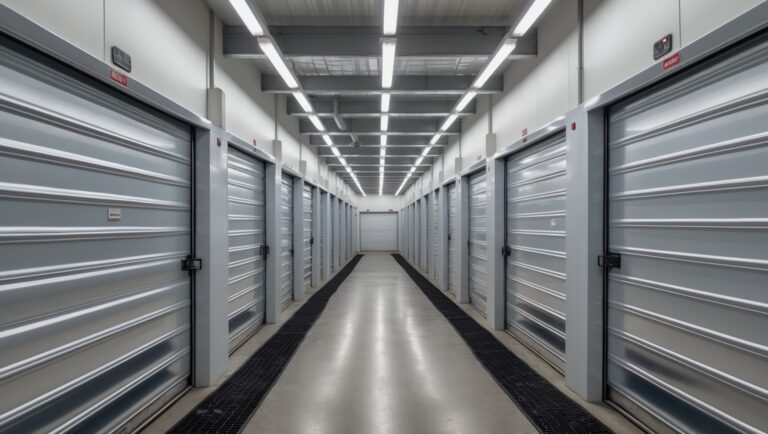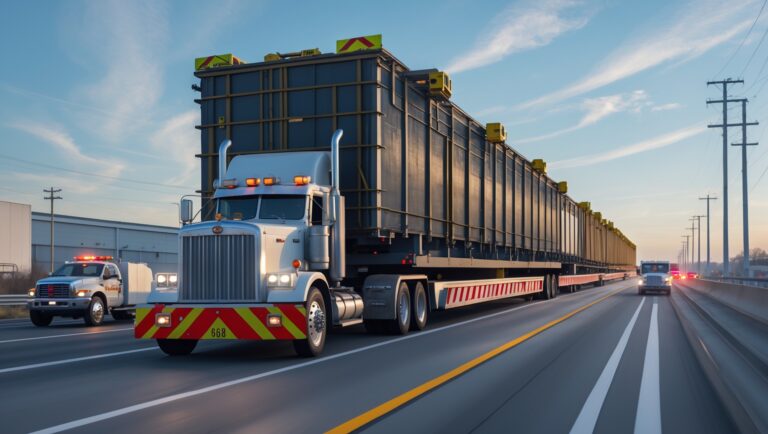A Comprehensive Guide to Storage Facility Fire Prevention: Systems, Protocols, and Upgrades
Introduction: Why Fire Prevention in Storage Facilities Demands a Proactive Approach
Fire is one of the most devastating risks facing storage facility owners and operators. With units often packed with flammable items—furniture, documents, electronics, and even chemicals—an unmitigated fire can spread rapidly, causing catastrophic property loss, legal liability, and lasting reputational damage. Insurance may cover some material losses, but the long-term impact on business continuity, customer trust, and compliance can be severe. More than ever, strong fire prevention protocols, modern detection systems, and regular upgrades are essential—not just for compliance, but as a core element of responsible facility management. This guide delivers a practical, actionable roadmap for storage facility owners and managers seeking to minimize fire risk, meet regulatory standards, and protect their investment and clientele.
Understanding Your Facility’s Fire Risk Profile
Common Fire Hazards in Storage Facilities
Identifying potential ignition sources is the first step toward prevention. Common hazards include:
- Improperly stored flammable liquids: Paints, solvents, and cleaning agents are often forgotten in units.
- Electrical faults: Aging wiring, overloaded circuits, or tenant-installed extension cords.
- Smoldering items: Cigarettes or improperly extinguished items left behind by tenants or contractors.
- Combustible clutter: Piles of cardboard, paper, or textiles that can serve as fuel.
- Arson or vandalism: Especially in facilities with minimal security or poor lighting.
Unique Fire Risks in Modern Storage Facilities
Recent trends—such as climate-controlled units, portable storage, and mixed-use spaces—bring new risks. For example, HVAC systems in climate-controlled units can introduce electrical hazards if poorly maintained. Mobile storage containers may be stored outdoors, making them vulnerable to wildfire embers or lightning strikes.
Fire Detection and Suppression: Systems Every Facility Should Have
Detection Systems: Smoke, Heat, and Beyond
Early detection is critical for minimizing fire damage. Consider these essential detection systems:
- Smoke detectors: Install in every hallway, common area, and ideally inside larger units. Opt for hardwired, networked models with battery backup for redundancy.
- Heat detectors: Useful in environments where smoke alarms may trigger false positives (e.g., dusty or humid areas).
- Monitored alarm systems: Ensure alarms are connected to a central monitoring service for immediate response—not just local sirens.
- Video smoke/flame detection: Advanced video analytics can now detect smoke or flames in live CCTV feeds, providing another layer of early warning.
Suppression Systems: Sprinklers, Extinguishers, and Special Solutions
Suppression systems can halt or slow a fire before emergency services arrive:
- Sprinkler systems: Wet-pipe sprinklers are standard, but consider dry-pipe or pre-action systems in areas prone to freezing or where accidental discharge could damage stored goods.
- Fire extinguishers: Place clearly marked extinguishers at all exits, main corridors, and at least every 75 feet. Train staff in their proper use and check expiration dates quarterly.
- Fire doors and barriers: Install rated fire doors and compartmentalize large facilities to slow fire spread.
- Special suppression agents: For facilities storing sensitive electronics or documents, consider clean agents (e.g., FM-200, CO2), which extinguish fires without water damage.
Protocols and Procedures: Building a Fire-Safe Culture
Facility Rules and Tenant Education
Many fires start due to tenant negligence or ignorance. Strengthen safety by:
- Clear lease language: Explicitly prohibit storage of hazardous materials, open flames, and unauthorized electrical devices.
- Onboarding materials: Provide all new tenants with a fire safety brochure—detailing rules, reporting procedures, and evacuation routes.
- Signage: Post fire safety reminders, extinguisher locations, and emergency exits throughout the facility.
Staff Training and Drills
Empower your team to act decisively in an emergency:
- Annual fire safety training: Cover extinguisher use, alarm protocols, and evacuation procedures.
- Regular drills: Simulate a fire scenario at least twice a year, including after business hours if your facility operates 24/7.
- Incident reporting system: Create a simple method for staff and tenants to report hazards or near-misses.
Compliance and Inspection: Meeting Legal and Insurance Standards
Understanding Fire Codes and Insurance Requirements
Storage facilities must comply with local, state, and federal fire codes—often as a condition of operating permits and insurance coverage. Key requirements typically include:
- Minimum number and placement of extinguishers
- Maximum travel distance to exits
- Sprinkler or alarm system installation and maintenance
- Clear markings for fire lanes and hydrant access
Consult your local fire marshal and insurance provider to ensure you’re up to date on requirements and best practices. Non-compliance can invalidate insurance or lead to costly fines.
Routine Inspections and Maintenance
Prevent system failures with a rigorous inspection schedule:
- Monthly: Test alarms, check extinguisher pressure, and inspect exit routes for obstructions.
- Quarterly: Conduct sprinkler flow tests, review storage layouts for code violations, and inspect fire doors for proper closure.
- Annually: Engage a licensed fire protection contractor to service detection and suppression systems and provide a written report.
Upgrading Outdated Fire Safety Infrastructure
When and Why to Upgrade
Many older storage facilities were built to outdated codes. Upgrading isn’t just about compliance—it’s about risk reduction and customer assurance. Triggers for an upgrade include:
- Major facility renovations or expansions
- Recurring false alarms or system failures
- Changes in occupancy type or stored materials
- Insurance premium increases or new policy requirements
Modernizing Detection and Suppression Systems
Modern systems offer greater reliability, better monitoring, and easier integration with building management software. Consider:
- Networked fire alarms: Centralized systems that can be monitored remotely and provide detailed incident data.
- Wireless detection: Useful for facilities with modular layouts or limited wiring access.
- Intelligent suppression: Newer sprinklers with quick-response heads or zoning controls to limit water damage.
- Integration with access control: Linking fire alarms to automatic gate releases and emergency lighting for safer evacuations.
Cost-Benefit Analysis of Upgrades
While upfront investment can be significant, benefits include:
- Lower insurance premiums
- Reduced liability and downtime
- Enhanced tenant trust and marketability
- Potential eligibility for green building or safety grants
Work with a qualified fire protection engineer to design upgrades that meet your facility’s unique needs and budget.
Special Scenarios: Outdoor, Mobile, and Mixed-Use Facilities
Outdoor and Container Storage
Outdoor self-storage sites, as well as facilities that store mobile containers, face unique challenges:
- Wildfire mitigation: Create defensible space around storage areas by clearing brush and combustible debris.
- Weatherproof detection: Install weather-rated smoke/heat detectors and ensure electrical systems are protected from moisture.
- Fire-resistant construction: Use metal containers or non-combustible fencing to slow the spread of fire from unit to unit.
Mixed-Use and Specialty Storage
Facilities offering specialty storage—such as document archiving, wine cellars, or art vaults—must adjust fire strategies:
- Special hazards: Paper archives require high-sensitivity smoke detection; wine or art storage may not tolerate typical suppression agents.
- Custom protocols: Develop tailored fire response and evacuation plans for high-value or irreplaceable items.
Emergency Preparedness: Response Plans and Recovery
Developing a Fire Emergency Response Plan
A written, well-communicated fire response plan can save lives and property. Essential elements include:
- Clear evacuation routes and assembly points, mapped and posted throughout the facility
- Chain of command: Who calls 911, who initiates alarms, who assists disabled persons
- Procedures for securing records, client data, and facility keys
Post-Fire Recovery Protocols
If a fire does occur, rapid, organized recovery minimizes downtime and customer impact:
- Contact insurance and restoration professionals immediately
- Communicate clearly with tenants about timelines and process
- Document all damage before cleanup for insurance and legal purposes
- Review incident and update your fire prevention plan accordingly
Conclusion: Proactive Fire Safety—The Foundation of a Resilient Storage Facility
Fire prevention in storage facilities is not a once-and-done checkbox—it’s an ongoing, dynamic process. Facilities that prioritize robust detection and suppression systems, maintain rigorous inspection routines, and foster a safety-first culture not only meet compliance standards but also set themselves apart in a competitive market. Upgrading outdated infrastructure and customizing strategies for unique facility types—be it outdoor storage, mobile containers, or specialty archives—demonstrates a commitment to tenant safety and business resilience.
Remember, every dollar invested in fire prevention is a shield for your property, your customers’ belongings, and your reputation. By staying informed on evolving codes, leveraging modern technology, and training your team and tenants, you transform fire safety from a legal obligation into a source of trust and long-term value. Take action now—review your facility’s fire risk profile, schedule your next inspection, and explore upgrades that will keep your storage operation safe for years to come.






